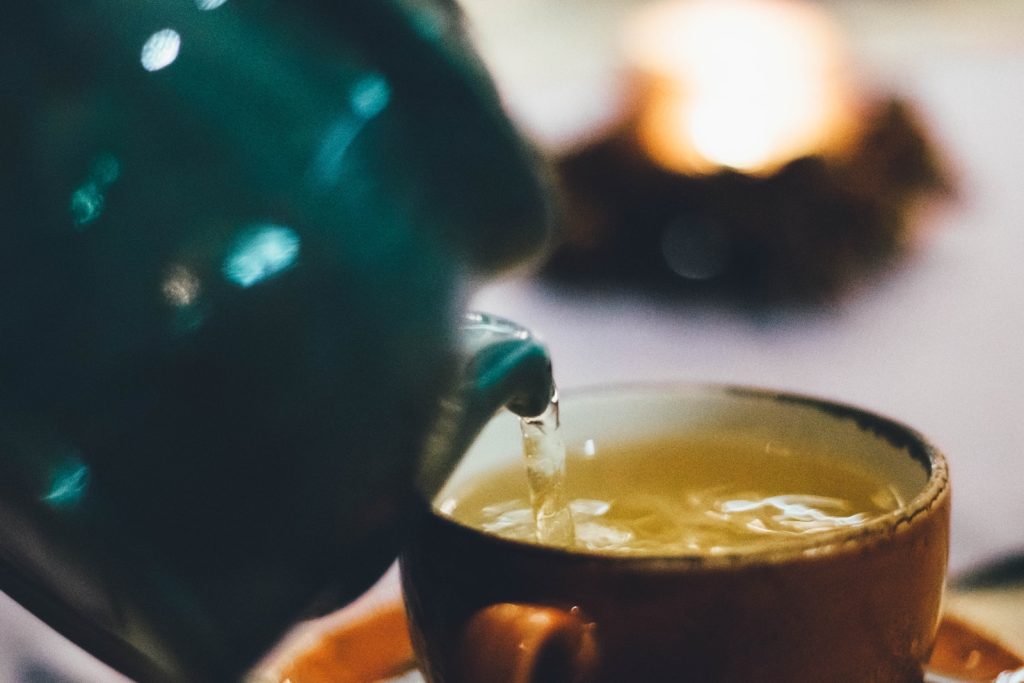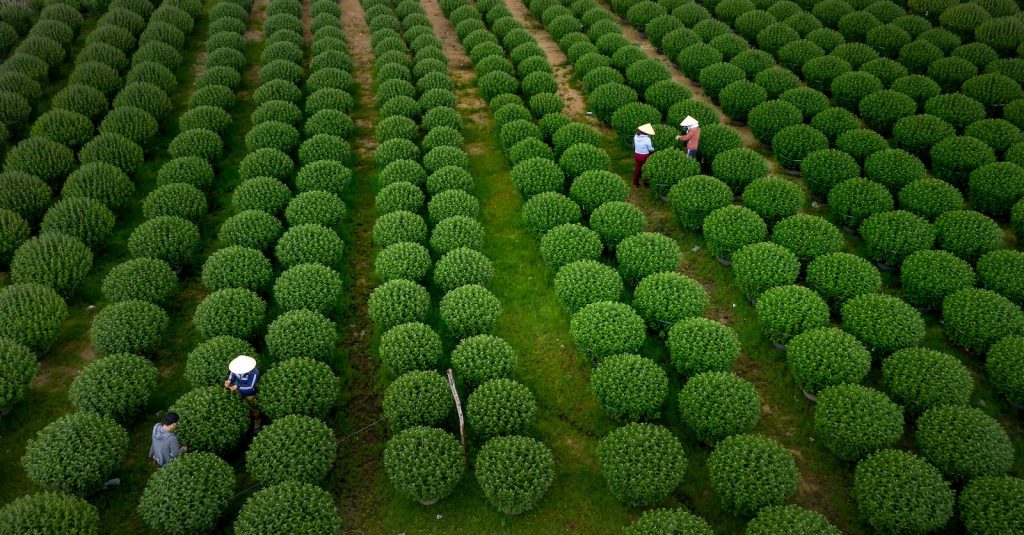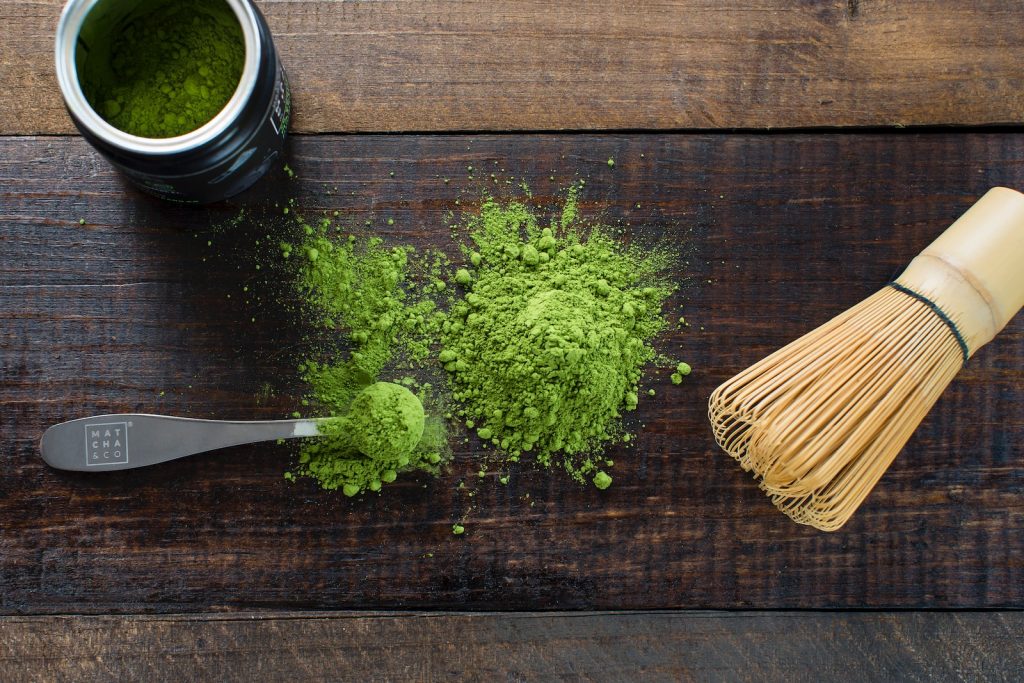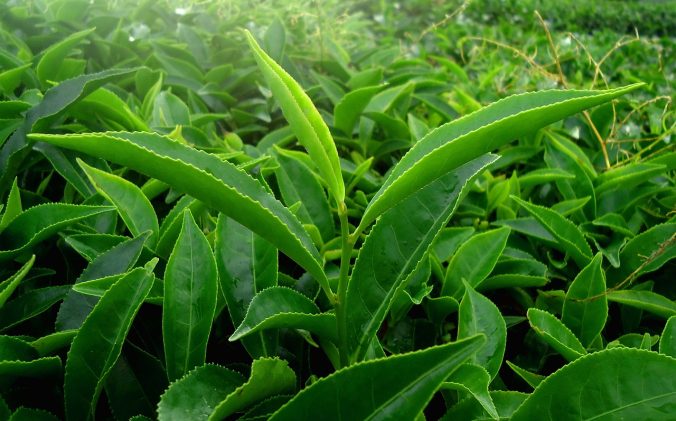Table of Contents
- Japanese Sencha
- Chinese Dragonwell
- Matcha
- Gyokuro
- Jasmine Green Tea
- Gunpowder Green Tea
- White Peony Green Tea
- Frequently Asked Questions
- How Much Caffeine Does Green Tea Contain Compared To Other Teas?
- Can Green Tea Be Consumed Cold Or Does It Need To Be Hot?
- Are There Any Potential Side Effects Or Interactions With Medications When Consuming Green Tea?
- Can Green Tea Help With Weight Loss?
- How Should Green Tea Be Stored To Maintain Freshness And Flavor?
- Conclusion
Welcome to the world of green tea, where the variety and complexity of flavors are as vast as the rolling fields from which they come.
As a certified tea sommelier, I’ve spent years exploring the nuances of different types of green tea, from the earthy notes of Japanese sencha to the delicate sweetness of Chinese dragonwell.
Green tea is beloved by many for its health benefits and refreshing taste, but not all green teas are created equal. Each type has its own unique flavor profile and brewing requirements, making it important to understand what sets them apart.
In this article, we’ll explore some of the most popular types of green tea and delve into their origins, processing methods, and tasting notes. Get ready to embark on a journey through some of the finest leaves in the world!
Japanese Sencha
Imagine a vast expanse of lush green tea gardens in Japan, where the finest Sencha leaves are harvested. These slender and delicate leaves produce one of the most beloved types of green tea worldwide. Japanese Sencha is renowned for its grassy aroma and fresh taste, making it a popular choice among avid tea drinkers.
Japanese Sencha offers numerous health benefits due to its high concentration of antioxidants called catechins. These potent compounds help reduce inflammation, lower blood pressure, and prevent chronic diseases such as cancer and heart disease. It also contains L-theanine, an amino acid that promotes relaxation without causing drowsiness.

To brew the perfect cup of Japanese Sencha, start by using filtered water heated to 165-170°F (75-80°C). Steep one teaspoon per six ounces of water for two minutes. Oversteeping can cause bitterness and ruin the delicate flavor profile. Experiment with different brewing times or amounts to find your ideal taste preference.
Incorporating Japanese Sencha into your daily routine not only provides a delicious beverage but also offers many health benefits.
Next time you’re sipping on this delightful tea, take note of its bright color, vegetal notes, and refreshing finish – all characteristics that make Japanese Sencha a true gem amongst other green teas.
Chinese Dragonwell
Originating from the West Lake region of China, Chinese Dragonwell is one of the most celebrated green teas.
It has a distinctive sweet and nutty flavor profile that’s sure to please any tea lover.
Its flavor is slightly grassy with a hint of chestnut, making it a perfect cup of tea for any time of day.
If you’re looking for something special, Chinese Dragonwell is the tea for you.
Origin
If you are a true green tea lover, then you must have heard of the famous Chinese Dragonwell. This vibrant and aromatic tea is known for its rich history and unique flavor profile that makes it stand out from other types of green teas in the market.
In this article, we will delve into the origin of Chinese Dragonwell, exploring its history and significance. The history of Chinese Dragonwell dates back to the Tang Dynasty, which was over 1200 years ago. Legend has it that a Taoist monk discovered a well with exceptionally tasty water in Hangzhou’s West Lake region. The locals soon began using this water to brew their tea, and this marked the beginning of what would become one of China’s most celebrated teas – Chinese Dragonwell.

Today, this tea remains highly regarded due to its historical roots and cultural significance. Chinese Dragonwell is also significant because of how it is grown and processed. Unlike other forms of green tea such as matcha or sencha, dragonwell is hand-pressed during production.
This process gives it an intricate shape that resembles flattened needles coupled with a distinct aroma reminiscent of freshly roasted beans. As such, drinking Chinese Dragonwell can be described as an experience like no other since every sip comes packed with flavors derived from centuries-old techniques.
In summary, understanding the origin story behind Chinese Dragonwell helps us appreciate why it is so highly prized among green tea enthusiasts worldwide. Its rich history dating back more than a millennium alongside its unique processing method make it one-of-a-kind when compared to other varieties on offer today. So if you’ve never tried any before or want to expand your knowledge about different teas available globally – give this iconic beverage a chance!
Flavor Profile
Now that we have explored the history and cultural significance of Chinese Dragonwell, let us move on to its flavor profile. As a tea sommelier, I can attest to the unique taste and aroma this green tea offers.
When it comes to tasting notes, Chinese Dragonwell boasts a nutty and vegetal flavor with hints of chestnut and a sweet aftertaste. Its aroma is reminiscent of roasted beans or toasted grains, making each sip an aromatic experience in itself.
To fully appreciate these flavors, it’s essential to brew your dragonwell correctly. The water temperature should be around 80°C-85°C (176°F-185°F), allowing the leaves to release their full potential without becoming bitter or over-steeped. A brewing time of two minutes is ideal for bringing out the tea’s delicate balance of flavors.
For those who enjoy multiple infusions from their tea leaves, you’ll be pleased to know that Chinese Dragonwell can withstand several steepings without losing its distinctive taste and aroma. Just remember always to adjust your brewing time accordingly as subsequent steeps require less time than the first.
In conclusion, understanding how best to prepare Chinese Dragonwell enhances the overall enjoyment of this iconic beverage. With its complex yet harmonious blend of flavors and aromas coupled with centuries-old processing methods, drinking this green tea is truly an unforgettable experience!
Matcha
Moving on from the Chinese Dragonwell, we come to a popular type of green tea: Matcha. This vibrant green tea has gained popularity in recent years due to its unique preparation and health benefits.
Matcha is made by grinding high-quality green tea leaves into a fine powder. To prepare matcha, you will need a bamboo whisk, a bowl, and hot water.
Start by sifting 1-2 teaspoons of matcha powder into your bowl. Then add about 2 ounces of hot (not boiling) water to the bowl and use your whisk to blend the powder until it is frothy and smooth.

One of the main reasons why matcha has become so popular is because it contains high levels of antioxidants. These antioxidants can help protect against various diseases such as cancer and heart disease. Additionally, matcha also contains caffeine which provides a natural energy boost without the jitters associated with coffee.
Another benefit of drinking matcha is that it can aid in weight loss by increasing metabolism and burning fat. It also promotes relaxation and reduces stress thanks to an amino acid called L-theanine which induces alpha waves in the brain.
Incorporating matcha into your daily routine can be easy once you know how to prepare it properly. With its numerous health benefits and delicious taste, this Japanese specialty should definitely be on every tea lover’s radar!
Gyokuro
Gyokuro is a type of Japanese green tea that is highly coveted for its delicate and complex flavor profile. It is often referred to as the highest quality tea in Japan, due to its unique cultivation process. The tea bushes are grown under shade for several weeks before harvesting, which allows for higher levels of chlorophyll and amino acids to develop.
The characteristics of gyokuro include a vibrant green color, a sweet aroma reminiscent of fresh grass or seaweed, and a rich umami flavor with hints of sweetness and bitterness. When brewed properly, it has a smooth texture that coats the palate and leaves a lingering aftertaste.
To brew gyokuro properly, it is important to use high-quality loose leaf tea and water that has been heated to around 140°F (60°C). Steep the tea for about two minutes in a small teapot or cup using approximately one teaspoon per six ounces of water. The resulting infusion should be pale yellow-green in color with an intense aroma.
In terms of cultivation, gyokuro requires careful attention from experienced farmers who must ensure that the plants receive just the right amount of sunlight and nutrients during each stage of growth. This labor-intensive process results in lower yields but also produces teas that are considered some of the finest in the world.
Overall, gyokuro stands out among other green teas due to its unique growing conditions and nuanced flavor profile. If you are looking to try something new or expand your knowledge of green teas, I highly recommend giving this exceptional variety a taste!
Jasmine Green Tea
As luck would have it, I was recently gifted a batch of Jasmine Green Tea from one of my dear friends. As a tea expert, I couldn’t wait to explore the flavor and health benefits of this exquisite tea. Jasmine Green Tea is made by infusing green tea leaves with jasmine flowers, creating an aromatic blend that’s both soothing and invigorating.
When you take your first sip of Jasmine Green Tea, you’ll immediately notice its sweet floral aroma and delicate taste. The infusion process brings out the natural flavors of both the tea leaves and jasmine flowers, resulting in a balanced cup of tea that’s perfect for any time of day. But did you know that there are also numerous health benefits associated with drinking Jasmine Green Tea?
According to research, Jasmine Green Tea has been shown to improve mental clarity, reduce stress levels, and even aid in digestion. This makes it an excellent choice for individuals who suffer from anxiety or digestive issues. Additionally, due to its high antioxidant content, Jasmine Green Tea may help protect against certain types of cancer and promote healthy skin.
To get the most out of your cup of Jasmine Green Tea, be sure to follow these brewing tips: use fresh cold water when boiling, steep the tea for 2-3 minutes at a temperature around 170°F (76°C), and enjoy without milk or sugar. For those who prefer a stronger brew, simply increase the amount of loose leaf tea used per serving.
Incorporating Jasmine Green Tea into your daily routine can provide not only a delicious beverage but also various health benefits. So why not try adding this delightful blend to your collection? With proper brewing techniques and an open mind towards new tastes and aromas, you might find yourself becoming quite fond – if not addicted – to this beautiful tea!
Gunpowder Green Tea
Gunpowder Green Tea has many health benefits such as improved digestion, boosted metabolism and increased cardiovascular health.
It’s important to follow the correct brewing instructions to get the most out of the tea, using one teaspoon of leaves per cup of water and brewing for 3-5 minutes.
Gunpowder Green Tea is a type of Chinese green tea made from young leaves that are rolled into small pellets, which gives it its unique appearance and flavour.
It’s believed to have originated in the Ming Dynasty in the Fujian province of China.
It’s a type of pan-fired green tea with a smoky, intense flavour that’s worth a try!
Health Benefits
As a tea sommelier, I cannot stress enough the importance of brewing techniques when it comes to enjoying the health benefits of Gunpowder Green Tea.
This type of green tea is known for its tightly rolled leaves that resemble gunpowder pellets and offer an intense flavor profile.
However, to truly reap the benefits, one must use proper brewing methods.
Gunpowder Green Tea comes in different grades, each offering unique health benefits.
The higher the grade, the better quality and more potent properties it contains.
For instance, the highest-grade Gunpowder Green Tea boasts high levels of antioxidants such as catechins and epicatechins which aid in reducing inflammation and boosting metabolism.
When steeping this remarkable green tea variety at home or in a café setting, be sure not to overbrew it.
Oversteeping can result in a bitter taste that may detract from its many health advantages.
A time range between 2-3 minutes will guarantee maximum flavor without compromising on its nutrients.
In conclusion, if you are looking for a full-bodied green tea with exceptional health benefits then look no further than Gunpowder Green Tea.
Remember to pay attention to your brewing technique as well as select the best grade possible for optimum results!
Brewing Instructions
Now that we have discussed the importance of using proper brewing methods for Gunpowder Green Tea, let us delve deeper into the different techniques you can use to achieve optimal results.
The first step in brewing a perfect cup of this type of green tea is to ensure that your water temperature is not too hot. The ideal range should be between 175-185°F (80-85°C) as hotter temperatures will extract bitter compounds from the leaves and compromise its health benefits.
Another important factor to consider when brewing Gunpowder Green Tea is the amount of tea leaves used. A general rule of thumb is one teaspoon per cup, but feel free to experiment with more or less depending on personal preference.
When it comes to steeping time, there are various options available based on desired flavor intensity. For a milder taste, steep for 1-2 minutes while those looking for a stronger brew may want to leave it up to 3 minutes. However, avoid overbrewing as it will result in a bitter taste that detracts from its many health advantages.
Ultimately, achieving the perfect cup of Gunpowder Green Tea requires experimenting with different brewing techniques until you find what works best for your tastes and preferences.
Keep these guidelines in mind and enjoy all the wonderful health benefits this remarkable green tea has to offer!
Origin
Before we delve into the brewing techniques, let’s take a moment to appreciate the origins of Gunpowder Green Tea. This tea has a rich history that dates back over 1,000 years and is believed to have originated in China during the Tang Dynasty. It was first created by rolling tender green tea leaves into small pellets resembling gunpowder, hence its name.
The cultivation techniques for this type of tea involves plucking only the top two or three leaves from each stem and then steaming them briefly to stop any oxidation. Then, they are rolled using traditional methods until they form tiny pellets which help preserve their flavor and aroma. These pellets can range in color from dark green to grayish-green depending on where they were grown.
Today, most Gunpowder Green Tea comes from the Zhejiang region of China but it is also cultivated in other parts of Asia such as Taiwan and Vietnam. Despite being widely popularized in Western countries only recently, it remains one of China’s most beloved teas due to its unique taste profile and numerous health benefits.
In conclusion, understanding the history and cultivation techniques behind Gunpowder Green Tea adds depth and appreciation when sipping on this delicious beverage. Knowing where your tea came from helps build a deeper connection with not just the drink itself but also with its cultural significance.
White Peony Green Tea
Moving on from the robust flavor of Gunpowder Green Tea, we now delve into the delicate yet refreshing taste profile of White Peony Green Tea.
This type of green tea is known for its subtle floral aroma and light-bodied texture, making it a popular choice among those who prefer milder tea flavors.
White Peony Green Tea originates from China’s Fujian province and is made using the youngest leaves and unopened buds of the Camellia sinensis plant.
The leaves are harvested in early spring, then quickly steamed or pan-fired to prevent oxidation. This process gives White Peony its signature pale color and preserves its natural antioxidants.
In terms of health benefits, White Peony Green Tea is packed with polyphenols that help protect against heart disease, inflammation, and certain types of cancer.
It also contains caffeine which can boost energy levels without causing jitters or anxiety.
When it comes to steeping this tea, be sure to use water at around 175°F for no longer than two minutes.
Over-steeping will cause bitterness and mask the subtle notes present in this delightful brew.
Whether you enjoy it hot or cold-brewed over ice, White Peony Green Tea is an excellent choice for anyone looking for a lighter alternative to traditional green teas.
As a tea sommelier, I highly recommend trying out different varieties of green tea to discover your personal preferences.
With its unique taste profile and numerous health benefits, White Peony Green Tea is an ideal option for those seeking a gentle introduction to the world of green teas.
So go ahead, take a sip and experience the soothing harmony between nature and culture that only fine teas can offer!
Frequently Asked Questions
How Much Caffeine Does Green Tea Contain Compared To Other Teas?
You may have heard that green tea contains less caffeine than black tea or coffee. However, the truth is a bit more nuanced than that.
While it’s generally true that green tea has less caffeine per cup than these other beverages, the exact amount of caffeine in any given cup of tea can vary based on factors like brewing time and temperature.
That being said, even if you’re looking to cut back on your caffeine intake, there are plenty of reasons to keep drinking green tea. This beloved beverage boasts a whole host of health benefits beyond its caffeine content, from improving heart health to reducing inflammation throughout the body.
So go ahead and brew up a cup – whether you’re seeking a jolt of energy or simply want to enjoy some delicious flavor and aroma, green tea has got you covered!
Can Green Tea Be Consumed Cold Or Does It Need To Be Hot?
Green tea can definitely be consumed cold and it’s a great way to enjoy all the benefits of iced green tea.
In fact, some people prefer drinking their green tea chilled as it makes for a refreshing beverage during hot summer days.
There are many recipes you can try to make delicious cold green tea drinks such as matcha lemonade or minty iced green tea.
However, it’s important to note that not all types of green tea taste good when consumed cold so it’s best to experiment with different teas until you find your favorite.
As a tea expert, I highly recommend trying out different recipes and experimenting with various types of green tea to discover the perfect combination that suits your taste buds.
Are There Any Potential Side Effects Or Interactions With Medications When Consuming Green Tea?
As a tea expert, it’s important to note that while green tea is generally considered safe for consumption, there are potential health risks and medication interactions to consider.
For example, one study found that combining certain medications with green tea extract increased the risk of liver damage.
It’s also important to note that excessive consumption of green tea can lead to caffeine-related side effects such as insomnia or an upset stomach.
As with any dietary supplement or herb, it’s always best to consult with a healthcare professional before adding it to your routine, especially if you’re taking any medications.
Can Green Tea Help With Weight Loss?
As a tea expert, I can tell you that green tea is renowned for its numerous benefits.
One of the most popular claims about this type of tea is its effectiveness in aiding weight loss.
Studies have shown that drinking green tea regularly may help boost metabolism and burn fat more efficiently.
However, it’s important to note that while green tea can be a beneficial addition to your diet, it should not be relied on as a sole solution for weight loss.
A balanced diet and regular exercise are still crucial factors in maintaining a healthy lifestyle.
How Should Green Tea Be Stored To Maintain Freshness And Flavor?
To ensure the freshness and flavor of your green tea, proper storage is crucial. Here are some essential storage tips to help you get the most out of your tea:
-
Store your tea in an airtight container away from light, moisture, and strong odors that can affect its taste.
-
Avoid storing it near spices or coffee beans that can contaminate the aroma.
-
Keep the temperature between 32-40 degrees Fahrenheit to preserve its quality longer.
Remember, maintaining these simple steps will enhance the longevity and delicate flavors of your green tea leaves for a satisfying sip every time.
Conclusion
In conclusion, as a tea expert, I highly recommend exploring the various types of green tea available.
From delicate and grassy Sencha to nutty and roasted Hojicha, each type offers its own unique flavor profile and health benefits.
It’s important to note that while green tea contains less caffeine than black or oolong teas, it still provides a gentle energy boost without the jitters associated with coffee.
And don’t be afraid to experiment with serving your green tea cold – it can make for a refreshing summer drink.
Just remember to store your green tea in an airtight container away from light and heat to maintain its freshness and flavor.
As they say, ‘A watched pot never boils,’ so sit back, relax, and enjoy a cup of soothing green tea.
